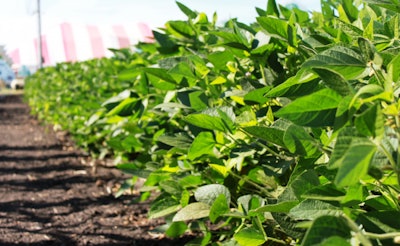
Some Dry US Crop Areas Persist
- Dryness remains in portions of the western and central US Midwest with only partial relief expected this week.
- According to the state agriculture secretary, Iowa is facing its most widespread drought since September 2013.
- This weekend rain fell in Wisconsin, western and southern Michigan, northern Indiana and much of Ohio except the southwest.
- Precipitation amounts ranged from 0.35 to 1.68 inches.
- Cooler forecast temperatures this week will conserve soil moisture, but those areas suffering from dryness will continue to be stressed.
- Much of the Midwest is forecast to see periods of rain over the next two weeks.
- Some of the crop areas in Iowa, central Illinois and a few others will likely experience net drying conditions.
FBN’s Take On What It Means: Most of the declines in production potentials will be slowed by the coming ten days of periodic showers and milder temperatures. However, unless significant rain falls some further decline in production may result and affect soybeans more than corn yields. Reduced yield expectations and increased export demand have led prices higher. At some point higher prices will start to limit demand and production is still expected to be adequate, just not as burdensome as previously anticipated.
Statistics Canada’s Production Report
- All wheat production is forecast at 35.7 million tonnes, which would be the largest crop since the 2013 harvest at 37.6 million tonnes.
- Durum production is seen at 6.9 million tonnes, up about 2 million tonnes from last year’s crop at 5.0 million and the largest crop since 2016.
- The canola crop is expected to total 19.4 million tonnes, but historically Statistics Canada adds to this volume.
- Barley production is seen at 10.5 million tonnes, up 1.6% versus last year.
- Oat production is forecast at 4.5 million tonnes, the largest crop since 2007.
- Pea production is seen at 5.0 million tonnes, which would be a record.
- Lentil production is expected to total 2.8 million tonnes, or the largest harvest since the 2016 crop.
FBN’s Take On What It Means: The wheat crop is large which could keep pressure on Minneapolis futures versus the other two markets. Durum production also is hefty. Those cash prices likely will fall once harvest progresses well into Canada. Barley production also is large, which will keep pressure on cash prices. Oat production for Canada is the largest in years and the US is set to have a large crop. We do not expect to see much strength in that market either in the coming months.
FBN Market Advisory services are offered by FBN BR LLC, dba FBN Brokerage, FBN BR and FBN Market Advisory (NFA ID: 0508695)
The risk of trading futures and options can be substantial and may not be suitable for all investors. Past performance is not necessarily indicative of future results.
This is not an offer or solicitation in any jurisdiction where we are not authorized to do business or where such offer or solicitation would be contrary to the local laws and regulations of that jurisdiction, including, but not limited to, persons residing in Australia and Canada.









